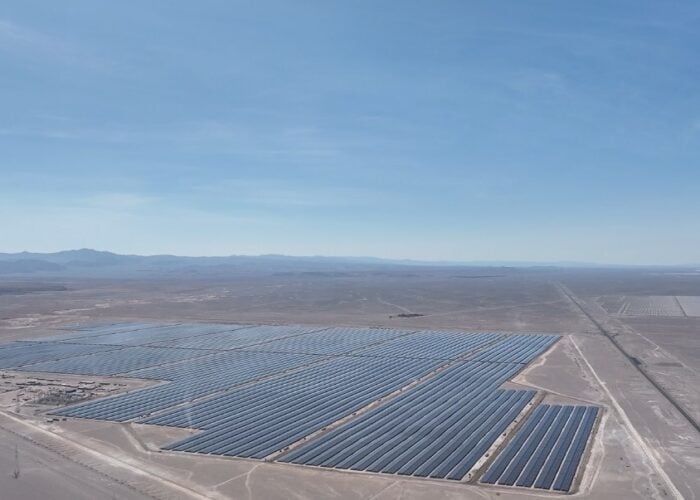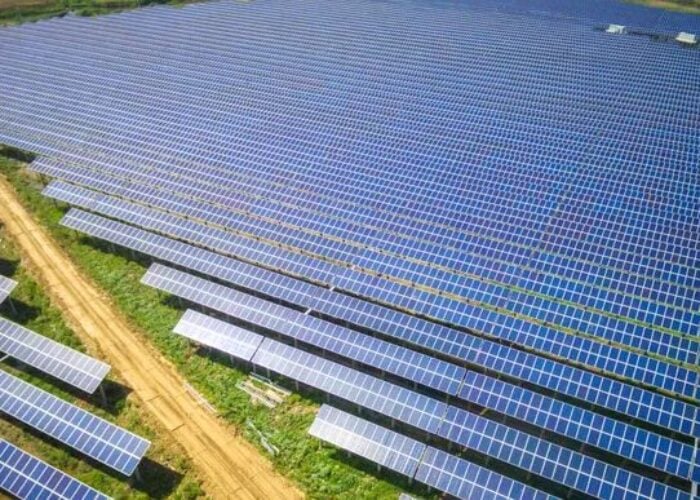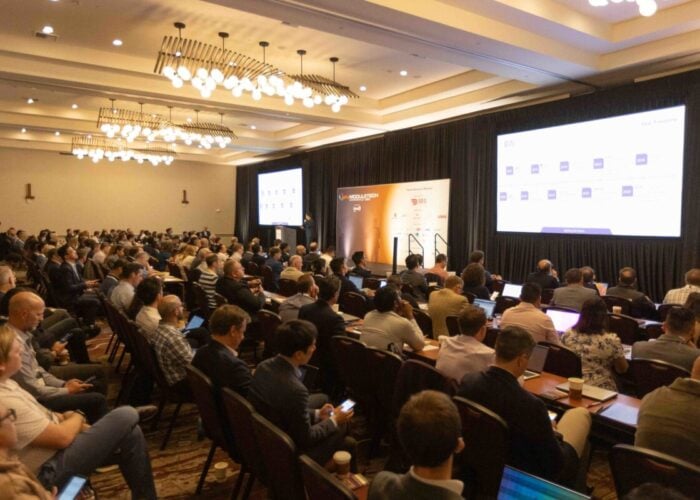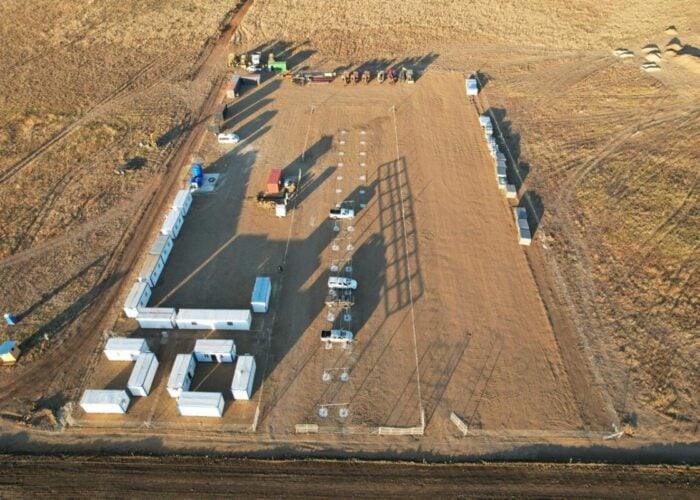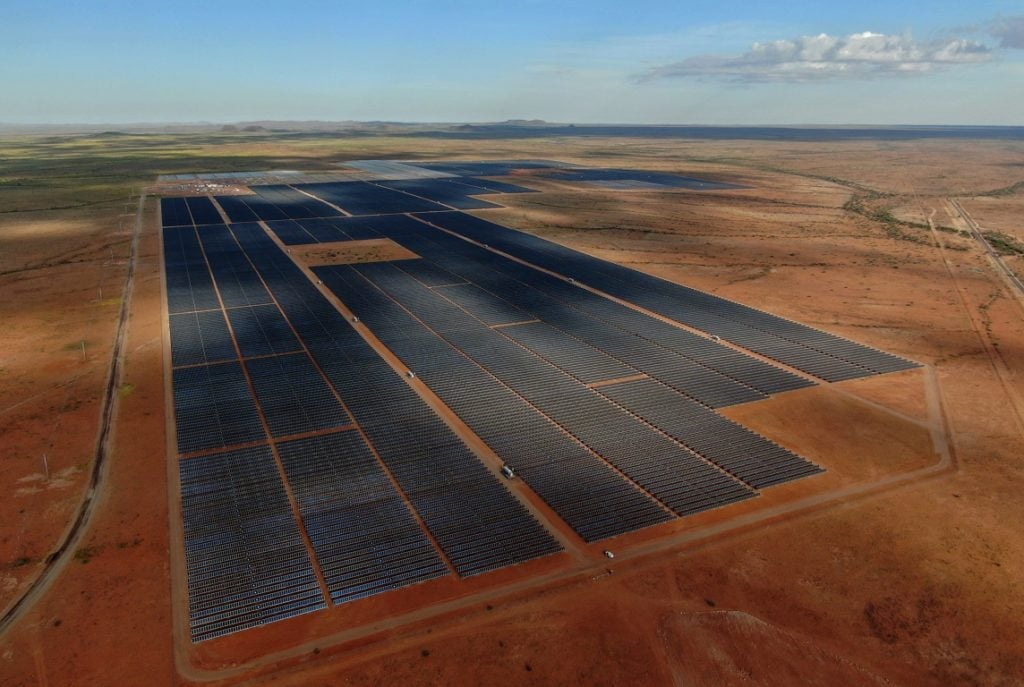
Alice Grundy explores the success of South Africa’s renewables auctions and the challenges that still remain for the development of PV in the country.
Faced with connecting to a constrained grid suffering from frequent scheduled blackouts, known as load shedding, utility-scale solar PV in South Africa has had to have a degree of resiliency to it. Its most prominent route to market, the Renewable Energy Independent Power Procurement Programme (REIPPP), continues to be fruitful and has recently seen 25 new contracts announced for wind and solar, with its next bid window soon to be released.
Unlock unlimited access for 12 whole months of distinctive global analysis
Photovoltaics International is now included.
- Regular insight and analysis of the industry’s biggest developments
- In-depth interviews with the industry’s leading figures
- Unlimited digital access to the PV Tech Power journal catalogue
- Unlimited digital access to the Photovoltaics International journal catalogue
- Access to more than 1,000 technical papers
- Discounts on Solar Media’s portfolio of events, in-person and virtual
A series of auctions offering independent power producers (IPPs) power purchase agreements (PPAs) with state utility Eskom, the REIPPP has been heralded by some as responsible for kickstarting the market for renewables in South Africa, although some concerns remain over previous stalling of projects and contracts.
“It has been extremely integral to the rollout of renewable energy in South Africa, and it continues to be,” says Niveshen Govender, COO of the South African Photovoltaic Industry Association (SAPVIA).
Around 2.3GW of utility-scale solar PV has been installed in South Africa since the REIPPP began ten years ago, according to SAPVIA. The fifth bid window of the REIPPP – results of which were announced in October 2021 – saw around 1GW of solar PV awarded contracts at an average weighted price ofR429/MWh (US$28.1/MWh).
Of these projects, some are under development by IPP Scatec, which has been successful in all but one round of the REIPPP. Scatec has won a total of 12 projects across the auction rounds, including the Upington Solar Complex consisting of Dyason’s Klip 1, Dyason’s Klip 2 and Sirius, which have a combined capacity of 258MW. But the IPP’s review of the scheme is mixed.
“In our experience, REIPPP is one of the most onerous tender processes we’ve participated in globally but clear and fair, requiring sufficient upfront preparation and good quality advisors,” Jan Jurie Fourie, general manager for Sub-Saharan Africa at Scatec, says.
“In our experience, REIPPP is one of the most onerous tender processes we’ve participated in globally but clear and fair”
It’s also a fiercely competitive auction, with most of the serious global competitors present. Fourie says this is because the tender process has a track record of deals being closed and projects built, while South Africa’s Integrated Resource Plan (IRP)provides developers and investors with a long-term view of what the market holds.
The IRP – last updated in 2019 – is an electricity infrastructure development plan based on least-cost electricity supply and demand balance. It included plans to pursue a diversified energy mix, describing the huge potential of renewable energy for the creation of new industries, job creation and localisation across the value chain.
For some, however, the REIPPP has led to headaches beyond the auction process. SOLA Group has also been part of the procurement programme since it began, but has had several projects cancelled by the government. As a result, SOLA converted one of its projects that was in the REIPPP process to the private sector, which “gave us a sense of where the future is going”, Chris Haw, chairperson of the SOLA Group, says.
“We now spend pretty much all of our time providing energy to clients in the private sector rather than involved in government procurement programmes.”
Indeed, 27 PPAs worth R56 billion (US$4.7 billion) with successful IPPs from the 3.5, 4 and 4.5 REIPPP bid windows were delayed around 2016. At the time, Eskom told sister publication PV Tech that the issue was not with renewables themselves, but with the destabilising effect on South Africa’s strained grid.
The signing of the contracts finally took place in April 2018, with the National Energy Regulator of South Africa (NERSA) launching an investigation into Eskom’s refusal to sign the PPAs in 2017.
Now, however, Scatec says that all of its preferred bidder bidder projects in the REIPPP and RMIPPP – a technology agnostic emergency tender set to support the grid amid heavy load shedding – are progressing well and will likely reach financial close in the first half of 2022. “As what is typical with large infrastructure projects there has been some delays due to delays in government approvals for RMIPPP,” Fourie says.
Future auctions
Much like bid window five, bid window six of the REIPPP is to also include 1GW of solar PV and 1.6GW of wind. “It would again be fiercely competitive with the grid likely having the last say when it comes to project selection for Preferred Bidders,” Fourie says.
However, Govender says it’s difficult to determine how competitive the sixth bid window will be because solar PV tariffs worldwide are not currently stable. “You’re seeing prices of PV modules increasing currently, instead of decreasing, you’re also seeing the logistic issue of South Africa where we are unable to get our components shipped to South Africa on time and being more costly.”
Macri, however, saysthe price is likely to decrease based on the trend in prices seen in previous REIPPP rounds. “On the other hand, limited grid capacity in high-resource areas could lead to the selection of projects with relatively higher tariffs as it happened in R5, and highlight further the need to increasingly consider battery storage to facilitate the integration of larger renewables capacities.”
With there being an oversubscription of bids in the fifth window – only 25 out of 102 projects were selected – there is certainly no shortage of interest in the market. “However, the possibility of further extensions to grid-connection and financial close deadlines are likely as this has repeatedly been seen in earlier rounds,” Macri says.
Bid window five recorded the lowest tariff since the inception of the REIPPP, with the tariff declining by 43% (in real terms) compared to the previous round, and by 84% (in real terms) compared to round one. Shaunagh Moodie, research analyst, Clean Energy Technology at IHS Markit says that round five’s record-low tariff could have been lower still if grid capacity constraints had not resulted in some cheaper projects from being rejected.
“Prices have fallen steeply since inception of the programme due to a number of factors including increased competition, lower input cost, lower returns accepted by investors and efficiencies on the advisory and construction side. There is however currently upward pressures on local interest rates, FX rates, logistics, modules and metal pricing which could signal a stabilisation of tariffs or slight increase in tariffs for the time being,” Fourie says.
Looking ahead, Fourie says that REIPPP auctions will continue as the country needs all the power it can get in order to replace old decommissioned capacity and service the growth of the economy. He adds that the sizes of projects are also likely to be amended, while having an element of dispatchability to projects will become increasingly important.
SOLA Group’s Haw says that while SOLA is still registering for the REIPPP, whether or not they participate in bid window six is not yet a given. “We’re not doubting that they might be able to get the programme back up and running and that’d be good for South Africa, but we just had a tricky experience here. We don’t want to have our fingers burned again until we’ve got some real evidence that the programme is back on track. And we haven’t actually seen that yet.
“The difference between the procurement and the building is where the big question mark lies at the moment,” Haw says.
Competitive pricing
Overall, solar PV is becoming increasingly cost competitive due to the persistent increases in Eskom electricity tariffs, according to Moodie. In 2021, NERSA approved the highest tariff increase over the past decade of 15.63%, amounting to ZAR133.64/kWh for FY 2021/22.
Recently, Eskom announced intentions of a further increase of 20.5% for FY2022/23 to ZAR161.04/kWh. “This, in addition to persistent load shedding resulted in South Africa’s distributed PV segment maintaining a healthy demand for solar PV systems despite other global markets being harder hit by solar PV price increases due to global supply chain challenges and component shortages,” Moodie says.
Eskom has been facing financial difficulties for some time, with a gross outstanding debt of R392.1 billion as of September 2021. Last year, the utility put forward a US$10 billion strategy to close the majority of its coal-fired power plants by 2050 and instead support renewables. A spokesperson for Eskom says the utility has existing relationships with various development finance institutions and multilateral development banks, and is in continual engagement with these entities to fund its pipeline of projects, which includes ~8GW of clean generation options.
“As Eskom is shutting down coal-fired plant in line with the Integrated Resource Plan of 2019, and at the same time is driving the development of new renewables and gas capacity, funding/financing is therefore required for the transition and significant investment in new generation, transmission and distribution capacity,” the spokesperson says.
However, questions over Eskom’s role in enabling renewables, in particular its role in generation, remain for some operating in the industry.
“It’s a difficult place for Eskom to be competitive because there’s a lot of fast moving technology and companies that have got a head start actually in building large scale generation facilities with renewables,” Haw says.
“The private sector can do [renewable energy] better, cheaper and faster”
This is echoed by Fourie, who says that in his view, Eskom shouldn’t be involved in the renewable energy generation side. “The private sector can do it better, cheaper and faster,” he says. “Eskom’s most important role is an enabling role by ensuring the grid is strengthened and expanded and that the grid connection process is quick and seamless.”
Grid a familiar foe
South Africa’s grid has been under strain for some time, with both load shedding and constraints key characteristics. The lack of available grid capacity in certain areas of South Africa is a roadblock being navigated by solar developers, with these often being the best areas for both wind and solar from a resource perspective. This in turn is creating a major bottleneck that, according to research firm IHS Markit,is holding backthe market from realizing its full potential.
Load shedding, meanwhile, was first implemented in 2008 due to Eskom experiencing supply constraints as a result of aged infrastructure and excess demand. Despite capacity investments since then which have led to oversupply and high reserve margin, capacity availability still remains low as a result of unscheduled shutdowns and maintenance issues. Indeed, Eskom has previously stated that South Africa has a shortage of new generation capacity estimated at 4,000MW – 6,000MW.
The Eskom spokesperson says that what the utility can and is doing is conduct reliability maintenance in order to catch up with the maintenance of its ageing plant, to bring it to acceptable levels of performance and reliability. “Meeting the capacity gap, both in generation and transmission capacity, must continue to be a priority for the country,” the spokesperson added.
Meanwhile, IHS Markit’sSilvia Macri, principal research manager, Africa and Middle East Power & Renewables – Climate and Sustainability, says: “New capacity additions going beyond IRP 2019 plans and better energy planning with transmission investments would help solve the problem in the long term.”
The country’s Council for Scientific and Industrial Research found that 2020 was South Africa’s worst ever year for load shedding, with 859 hours recording – nearly 10% of the year. But the practice is throwing more focus onto solar-plus-storage for the commercial and industrial sector.
“I think it’s only giving a stronger business case to renewable energy, solar PV particularly,” Govender says. “With more load shedding and with more power cuts, you have a lot more private entities going with solar PV and battery storage to cater to some of the load.”
Indeed, while these hybrid systems are generally more costly, increased finance availability has made it a more affordable and accessible option for many residential, commercial and retail customers who have had their working hours impacted by load shedding. In particular, the mining and solar sectors are becoming increasingly intertwined. “Mining companies need reliable power for their activities, and investing in self-generation is a priority considering the frequent power interruptions on the grid,” Macri says.
Late last year, the South African mining industry announced it is planning to build 3.9GW of renewable projects and storage, with this supporting the sector’s 2050 net zero target while helping relieve pressure on Eskom, which has previously called on the industry to supplement its energy supply.
Meanwhile, so-called energy ‘wheeling’ projects – where a business signs a PPA with a renewable asset and the power is transported, or wheeled, through the transmission infrastructure – are beginning to take off in South Africa. Last year, the SOLA Group completed what it claims to be the first large-scale solar wheeling project in South Africa.
Global retailer Amazon signed a PPA for the project, with SOLA now having similar projects in the pipeline. However, it’s taken a while to get to the point where solar wheeling is viable, with the economics previously making it hard for large energy users to see there was a benefit. However, with the economics having improved over the time, it’s now an attractive offering.
Additionally, the legislative framework has also made wheeling tricky, having prevented private companies from getting generation licenses for projects over 1MW in size, SOLA says. However, when the IRP was updated in 2019, this too was updated, allowing companies like SOLA to get a licence for this type of project. Further changes have meant that projects up to 100MW can now be licensed. “That’s the reason why it suddenly become a commercially viable thing to do and legally viable thing to do,” Haw says.
However, even if a 100MW project is built offsite and the power wheeled, if a blackout occurs on the grid, the business is still left without, once again highlighting the need to solve the load shedding on South Africa’s grid.
One of the major initiatives that SAPVIA has going forward is to work with Eskom to strengthen the grid, looking at innovative ways to connect more renewable energy.
Alongside this, SAPVIA is also working on the localisation of manufacturing. While a local supply chain for components is starting to be built in the country, “we’re still struggling a bit with the modules and inverters”, Govender says.
“We are, however, working together with the African government on a localisation master plan for renewable energy components to see what can be localised, what can be locally manufactured, and how to ramp that up over the next coming years to meet the demands of the industry.”
Overall, one thing’s for sure; 2022 is set to be an interesting year for solar development in South Africa. Sure, there’s much to be solved between tightening grid capacity, load shedding and the development of local manufacturing. But there’s also much to be excited about. The sixth bid window of the REIPPP holds great potential, and when coupled with the rise in interest in PV in the C&I sector, it sets this year up to be an exciting one indeed.


